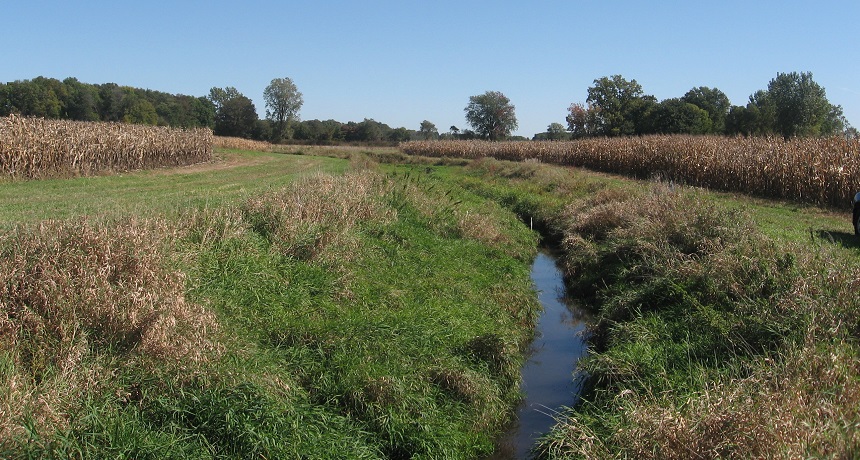QUESTIONS for Ditching Farm Pollution

Lush grasses on a floodplain help hold back sediments and capture nutrients.
J. Tank/Univ. of Notre Dame
Share this:
- Share via email (Opens in new window) Email
- Click to share on Facebook (Opens in new window) Facebook
- Click to share on X (Opens in new window) X
- Click to share on Pinterest (Opens in new window) Pinterest
- Click to share on Reddit (Opens in new window) Reddit
- Share to Google Classroom (Opens in new window) Google Classroom
- Click to print (Opens in new window) Print
SCIENCE
Before reading
1. When you think of a ditch, what do you see? What does it look like? What function, if any, does it have?
2. Farmers use a lot of chemicals to help crops grow and to keep livestock well. How do farmers keep these agricultural chemicals from polluting the environment next to the farm?
During reading
1. Where do farmers tend to build the ditches on their land?
2. What is the purpose of these ditches?
3. What is “runoff”?
4. What’s the purpose of a “demonstration” project?
5. If agricultural chemicals are good for a farm, why are people concerned about their running off in snowmelt and rains?
6. What was the toxin that tainted the Toledo water supply in August 2014, where does it come from, and what are the risks that it poses?
7. What’s the purpose of no-till and cover crops?
8. Explain the “two-stage” ditch design and its advantage to farmers.
After reading
1. Jennifer Tank says her team’s data show that the two-tier Shatto Ditch is working, meaning its helping farmers and the environment. Go back to the text and find what information, if any, supports that claim.
2. Farmers use fertilizers to boost their crops’ growth. Why might the runoff of those fertilizers into waterways near to a farm be bad for the environment? What support does the article make for possible harm from fertilizer runoff?
SOCIAL STUDIES
1. Fertilizer runoff can alter the ecology of rivers, lakes and coastal environments. Indeed, that runoff is often described as a primary reason for the development of “dead zones” — aquatic regions with too little oxygen to support the health of fish and other organisms. Map how fertilizer runoff can move from a farm, describing each process, from the northern U.S. Midwest to the Gulf of Mexico. Now research and describe the effects of dead zones prompted by these fertilizing chemicals in the Gulf and other coastal waters. Finally, identify in what months coastal dead zones tend to form — and explain why you think that might be.